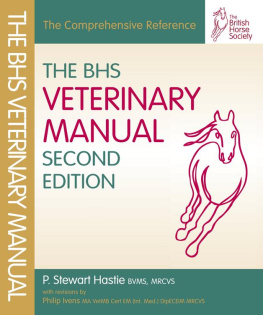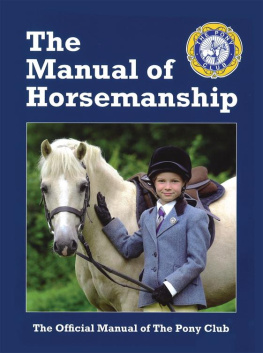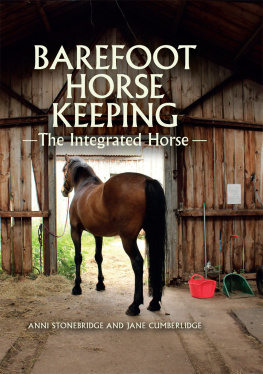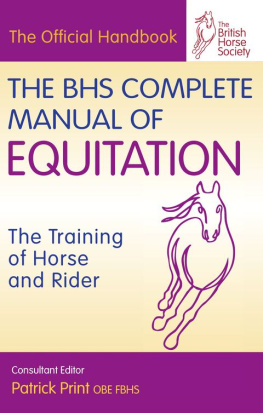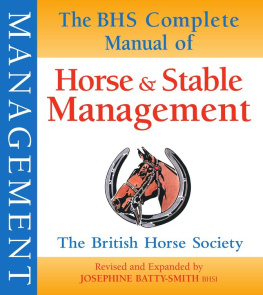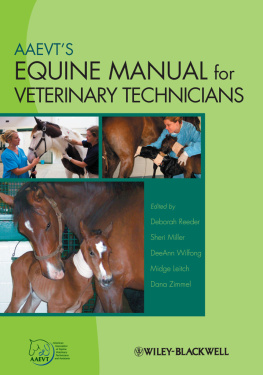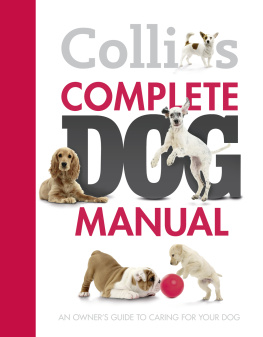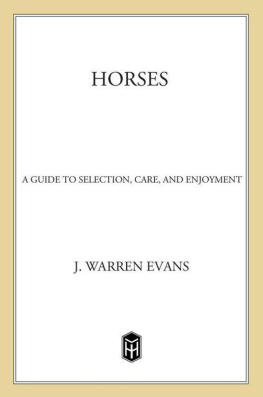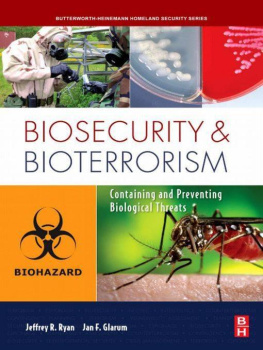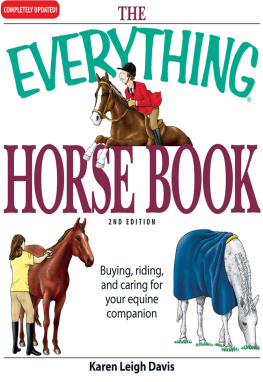My eldest daughter, about to begin primary school, enjoyed being mother at coffee breaks in the Practice. She became privy to the shop talk. The exchange of ideas about what animal, what was possibly wrong, who should see to it, and how to treat it, were normal subjects, and the language more vernacular than technical . Carolyn started school. Inquiry as to her progress revealed a heart rending Bible story, about a Mr Saul who had been blinded. Our expressions of dismay were dismissed by her saying, Dont worry. God had seen such a case before so he knew what to do. There is little fundamental change in veterinary (and medical) practice; there will always be students and teachers, and there will always be patients.
ABOUT THIS BOOK
This is a companion volume to the BHS Complete Manual of Stable Management and indirectly to the BHS Complete Manual of Equitation. They are intended primarily for examination students but they should also be seen as essential reading for all who care about and care for the horse as guidelines for horsemastership and horsemanship .
This manual covers health and disease in, I hope, sufficient depth but without unnecessary technical detail, to enable the reader to better understand and therefore to apply the relevant knowledge, essential and background, for the good of the horse.
It is in four Parts. Todays horse is but a genetic extension , altered for good (but sometimes for worse) by man, and an understanding of Part 1, particularly Evolution and Behaviour, is in my opinion essential in order to understand the subsequent Parts. The separation of disease from health will require the reader to refer back to Part 1 good revision.
The book is the product both of many years in horse practice and also, importantly, in communicating with those involved with horses through discussions, demonstrations , lectures and journal articles. The contents are my sole responsibility, as is my interpretation of the vast amount of information gleaned from my own experience and from that of the many other veterinarians, authors, lecturers and specialists, who over the years have been willing to spread their wisdom and to argue their points of view with me. Just as important were the theories and practices of the many experts in horsemastership who were frequently required to put me straight. Collectively they helped make me a better practitioner, more able to see more clearly and hopefully, too, a more succinct writer.
All who have dominion over the horse must practise responsibility for it. I make no claim to do so by original research findings but like to think that my contribution to this responsibility is in explaining the what, the why, the whom, the how, the where and the by whom (Kiplings Six Honest Servingmen), for equine veterinary management.
Throughout the book the use of the hyphen in dis-ease is, I believe, vital to understanding the concept of well or ill, at-ease or dis-eased. The horse keeper must be able to recognise the relevant signs of health and disease which are so important in routine husbandry if one looks for them and to so interpret them that correct decisions are made. Veterinary science and practice do not stand still and so a textbook cannot always be specifically up-to-date but the basics do not change.
Preface to the Second Edition
Horses are still horses despite the ill effects of domestication not only on their behaviour but on their (internal) functioning . Mans progress in understanding horse keepership in increasing depth has exposed some of the unwanted side effects.
Research and development has, fortunately, kept reasonably abreast of functioning (and structural) disorders and learnt how to diagnose in greater detail, how to treat and, particularly, how to minimise the risks.
Whatever the sub-disciplines involved they all, sooner or later, fall within the remit of the veterinary profession and the statutory rules which govern diagnosis and, particularly , treatment.
Complementary medicine has a role but is not within this Manual.
Most readers of this Manual look for information from the cutting edge of research and development which is as up to date as publication at all levels allows. Global warming and its potential consequences of emerging exotic disease is a serious risk: equine veterinary implications must be appreciated and forearmed against.
More locally in Europe and the New World, the physiology and potential pathology of equine metabolism now available has shone a vast new light on Horse Management. Obesity in horses and the afflictions of the geriatric have brought much new thinking about laminitis as well as its predispositions. Loss of performance is no longer just a locomotor problem per se and Azoturia to give it an old-fashioned title are all now subsets of Internal Medicine.
Fortunately I have a colleague eminently suited to update and co-author those chapters most concerned with this aspect of horse care. Philip Ivens, a Cambridge University Veterinary School graduate of distinction, a post graduate Royal Veterinary College trained Internal Medicine Resident becoming a board certified European Equine Internal Medicine Diplomate, one of the few domiciled in the UK. I am most grateful to him for his masterly work in producing the new chapters on laminitis, equine metabolic syndrome, equine cushings disease (including update of the physiology of the equine pituitary gland), recurrent airway obstruction, equine genetic disease, atypical myopathy, biosecurity and strangles required to justify the Second Edition sub-title.
P. S TEWART H ASTIE
J UNE 2012
Where to start, where to finish? There are so many to whom I am indebted, some no longer with us but whose writings remain, and some who are still active veterinarians:
Sir Frederick Smith AVC, for his work with navicular disease in the late 19th century, followed some thirty years later by that of my first boss Major Oxspring FRCVS, the first (with Col. Pryor) to use radiography for this important foot problem.
Capt. Horace Hayes FRCVS, the original author of Veterinary Notes for Horse Owners, such a standard textbook that it has been subsequently edited by three other veterinary surgeons, particularly Peter Rossdale FRCVS, an international authority on diseases of the newborn foal, amongst other subjects, and whose permission to quote is gratefully received.
Professor Linton MRCVS, one time of the Royal Dick Veterinary School, is remembered for his two classic text books, Nutrition and Hygiene, which held much importance for students in the mid-20th century; and Dollar, of surgical textbook fame (and his subsequent editor Professor OConnor). These books remained in use up to and after the Second World War, as did that of J. Share Jones FRCVS as well as the much earlier encyclopaedias of Professor J. Worthey Axe.
One of my own professors stands out; he taught well, but his emphasis was on search: my references to Seek, and ye shall find, come (indirectly) from that. In a similar vein Sam Hignett, a cattleman with more knowledge of the horse than most people, and a personal mentor, advised, Treat all research findings cynically until substantiated. No-one can forget Professor J. G. Wright, a lecturer and horseman

